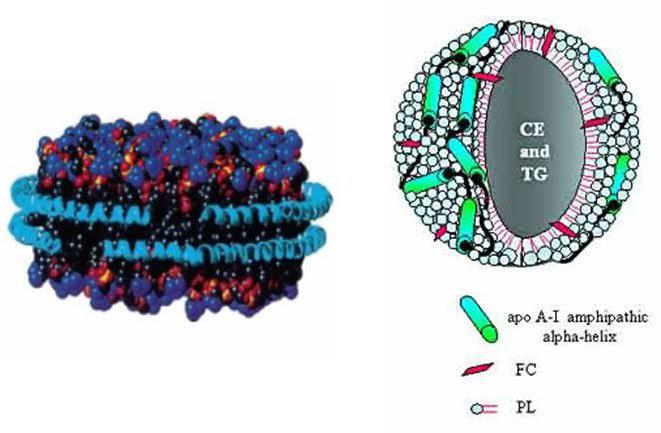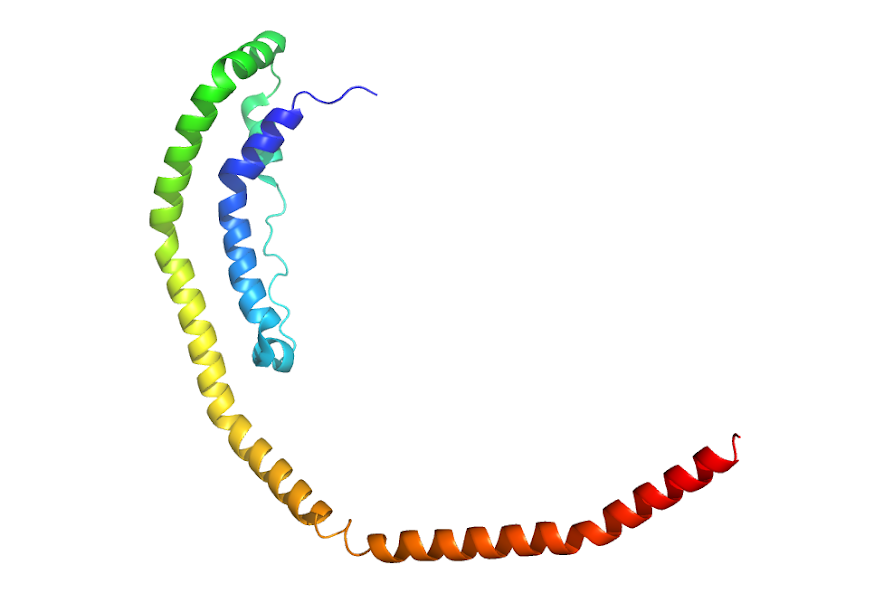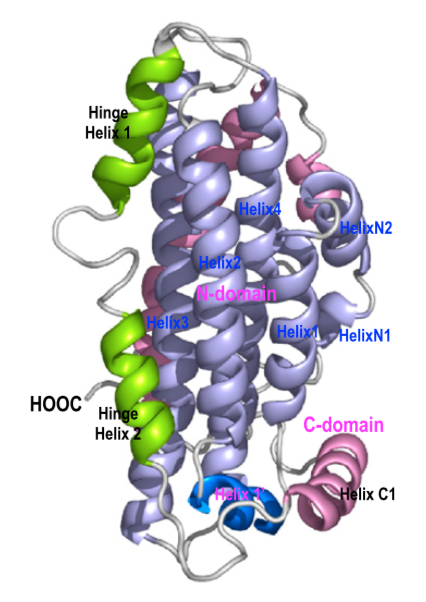Lipoproteins are lipid-protein complexes that transport lipids in the human body and control lipid homeostasis. Notable examples are HDL and LDL. The protein components of lipoproteins are called apolipoproteins. Apolipoproteins like ApoA-I and ApoE play crucial roles in common diseases like atherosclerosis (Cardiovascular disease) and Alzheimer's.
Two characteristic examples of lipoprotein structures (discoidal HDL particles and mature HDL) are shown below (figure adapted from Segrest, J.P., Zannis, V.I. et al., Curr. Opin. Lipidol., 11, 105-115 and Lund-Katz S. et al. Frontiers in Bioscience 8, d1044, May 1, 2003) :
Apo-AI is the major protein constituent of plasma HDL and can assume a "belt-like" structure to encompass lipids (J Biol Chem. 2011 Nov 4;286(44):38570).
ApoA-I is not produced in the human brain, and ApoE takes over its lipid carrying functions there. ApoE polymorphisms have been linked with predisposition to Alzheimer's disease. Only the structure of the lipid-free, N-terminal moiety of ApoE is known (shown below), but it is highly possible that ApoE follows similar, albeit not identical, conformational changes as ApoA-I (Proc Natl Acad Sci U S A. 2011 Sep 6;108(36):14813).

